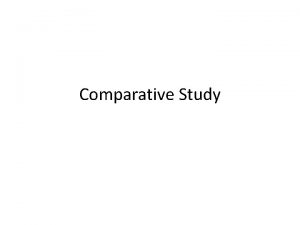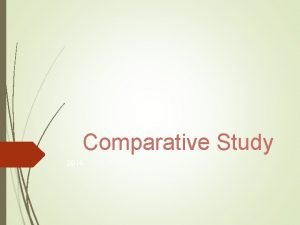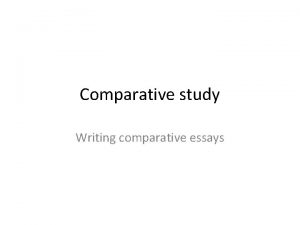Comparative Anatomy Comparative Anatomy O Is the study











- Slides: 11

Comparative Anatomy

Comparative Anatomy O Is the study of anatomical structures and evolutionary relationships. O Is used as evidence for evolution. O Indicates that various organisms share a common ancestor.

It includes the study of OHomologous structures OAnalogous structures OVestigial structures

Comparative Anatomy O Organisms that are closely related to one another share many anatomical similarities. Sometimes the similarities are obvious, as between crocodiles and alligators, but in other cases considerable study is needed for a full appreciation of relationships.

O Whales and hummingbirds have skeletons inherited from a common ancestor. Their bodies have been modified and parts have been lost through natural selection, resulting in adaptation to their respective lifestyles over millions of years. On the surface, these animals look very different, but the relationship between them is easy to demonstrate. Except for those bones that have been lost over time, nearly every bone in each corresponds to an equivalent bone in the other.


Vocabulary

Homologous Structures O Structures with similar structure, but different functions Human Cat Whale Bat

Analogous structures O Have different anatomies but similar function. O These are seen on organisms that are not necessarily closely related, but live in similar environments and have similar adaptations.

Vestigial structures O Anatomical remnants that were important in the organism’s ancestors, but are not longer used in the same way.

Exit Slip O In your own words, explain a homologous structure and an analogous structure and provide an example of each.





















